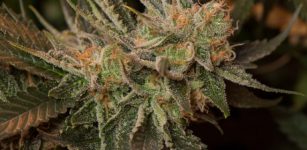The History of Recreational Cannabis in Australia

The recreational use of cannabis in Australia sowed its seeds in Kings Cross in the mid to late 1960s, even though the plant had been outlawed decades earlier. It was introduced into Sydney’s bohemian hub by US servicemen, who were on respite from the Vietnam War.
Over the next decade, the use of the drug spread throughout suburban Sydney and beyond. The initial response by authorities was to prosecute users. Between 1966 and 1969, the arrest rate rose by 1000 percent. And penalties for cultivation, supply and possession of the plant were increased.
Cannabis is the most widely used illicit substance in this country. In 2010, Australians spent $3.8 billion on pot. The 2016 National Drug Strategy Household survey found 36 percent of the Australian population over the age of 18 had used cannabis during their lifetime.
Fifty years ago, when its use started to take off, the plant, which is native to India, was being trafficked into Australia from Southeast Asia. But nowadays, it’s grown widely throughout the country in grow houses and outdoors settings.
Over recent years, politicians such as Victorian Reason Party MLC Fiona Patten and NSW Greens MLC Dr Mehreen Faruqi have been calling for the legalisation of its recreational use.
So, why is cannabis possession illegal in Australia?
Early restrictions
At the behest of the United States, the League of Nations established the 1925 Geneva Convention, which was a transnational drug control treaty designed to ban the recreational use of opium and the coca plant.
Cannabis was a last minute addition in the prohibition. The request was by the Egyptian government, who claimed “chronic hashism” was causing widespread insanity in its country. The motion was backed by Turkey.
In response to the international treaty, Australia’s first Commonwealth Health Department director general, Dr John Howard Lidgett Cumpston, advised the prime minister’s office that opium was the only drug of concern, and there was no need to outlaw cannabis.
Although under pressure from the UK, some jurisdictions around the country slowly began implementing laws consistent with the Geneva Convention, that included cannabis. In 1928, Victoria was the first state to legislate against the plant’s recreational use, and NSW followed suit in 1935.
Reefer madness
In 1937, North Carolina congressman Robert Lee Doughton introduced the Marijuana Tax Act into the US lower house. The legislation was drafted by the Federal Bureau of Narcotics commissioner Harry Anslinger: the godfather of cannabis prohibition. Congress approved the Act.
Anslinger had previously enforced the failed prohibition on alcohol in the US. After that prohibition was revoked in 1933, he turned his attention to marijuana and ran a media campaign over the following years that claimed cannabis led people to commit violent crimes.
Despite restrictions on the sale of cannabis as a recreational drug, it was still grown as a commercial crop for medicinal and industrial purposes in the 1930s. The marijuana legislation didn’t prohibit the substance, but it placed an exorbitantly high tax on it, and failure to pay the levy was a criminal offence.
The American Medical Association spoke out against the tax as cannabis medicines were widely used throughout the nation, and as the levy applied to cannabis prescriptions, as well as purchases at pharmacies, it meant the medicines would soon become too expensive for your average patient.
The effect down under
Following the imposition of the tax in the States, the US consul wrote to the Australian government requesting information about state cannabis regulations. A Federal Bureau of Narcotics factsheet on the dangers of marijuana was included with the letter.
This led then Australian external affairs minister Robert Menzies to write to the League of Nations and issue an agreement to include cannabis in the provisions of the Geneva Convention. And jurisdictions around Australia that hadn’t outlawed the plant previously, had to do so.
In April 1938, an article appeared in a major Australian newspaper warning the public about a “Mexican drug” that causes madness. The article introduced the word marijuana to the Australian public, which served as a distinction between the dangerous drug, and the well-known cannabis plant.
“Under the influence of the newer drug, the addict becomes at times almost an uncontrollable sex-maniac,” read the article, which was thought to be linked to Anslinger. Seven weeks later, another article appeared in the paper outlining that marijuana cigarettes had been smoked at a party in Sydney.
These articles led to widespread moral panic about the drug. At the time, cannabis medicines were widely available either by prescription or over-the-counter in Australia. However, the use of medicinal cannabis was eventually phased out in the 1960s, when states enacted laws to prohibit it.
Reducing penalties in Australia
In 1977, a Senate committee recommended the removal of criminal penalties for drug possession and use of cannabis. This led to South Australia decriminalising minor marijuana offences in 1987, and the ACT followed suit in 1992.
In NSW, a person found in possession of cannabis is guilty of an offence, under section 10 of the Drugs Misuse and Trafficking Act 1985. The maximum penalty for this offence is 2 years imprisonment and/or a $2,200 fine.
In April 2000, the NSW government introduced the cannabis cautioning scheme. This provides police with the discretion to issue a cannabis caution to adults found in possession of up to 15 grams of pot. Under the scheme, an individual can only be issued with two warnings before charges must be laid.
A 2011 NSW auditor general’s report found that over its first decade the cannabis cautioning scheme had diverted more than 39,000 minor cannabis offences from the courts. The auditor general said that cautioned individuals are less likely to reoffend, than those who are charged.
The green rush in the US
Perhaps surprisingly, one in five US residents now live in a jurisdiction where recreational cannabis is legal. Colorado and Washington were the first states to legalise the use of cannabis on November 6 2012.
Today, the benefits of the legal and regulated recreational marijuana industry in Colorado have been lauded the world over. Last year, the local market generated $198.5 million in tax revenue, which was funnelled into public health programs and schools







